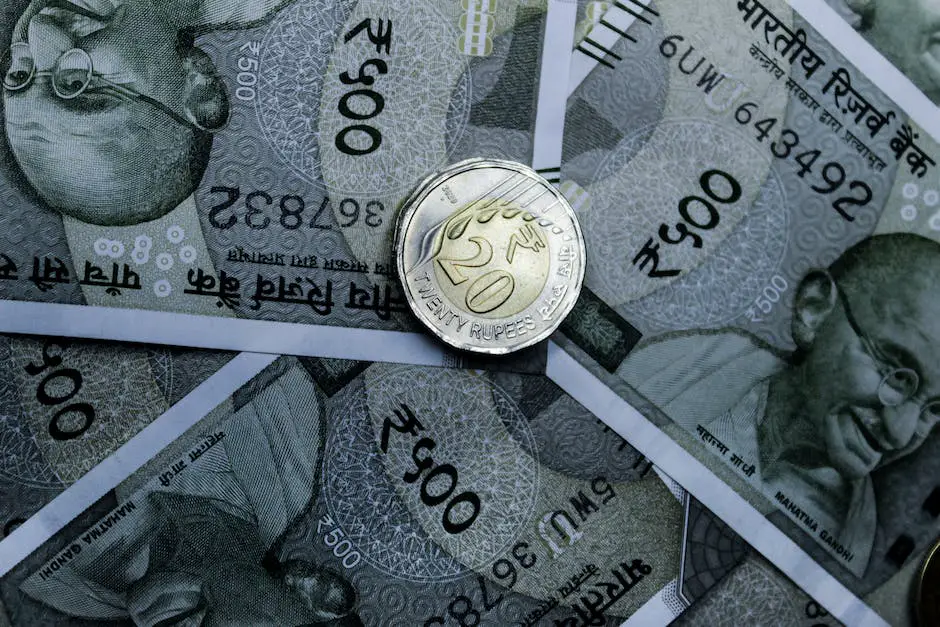Understanding Currency Devaluation
Throughout history, nations have experienced various economic challenges, with currency devaluation being one significant concern. Understanding the dynamics behind currency devaluation is vital for governments, businesses, and individuals to effectively navigate the complex world of global finance. This essay delves into the causes of currency devaluation, subsequently examining its effects on the economy, and drawing insights from historical examples to contextualize its real-world impact. Furthermore, it offers practical strategies that various stakeholders can adopt to cope with the adverse effects of currency devaluation, laying the groundwork for informed decision-making and strategic planning in the face of currency fluctuations.
Causes of Currency Devaluation
Currency Devaluation
Currency devaluation is a complex economic phenomenon that occurs when the value of a country’s currency declines relative to other currencies. This can have significant implications for a nation’s economic growth, trade balance, and overall financial stability. To better understand currency devaluation, it is essential to explore the various causes that contribute to its occurrence. These factors may include economic policies, market forces, and government intervention.
Economic Policies
One of the primary drivers of currency devaluation originates from a nation’s economic policies. For instance, if a country implements expansionary monetary policies, such as lowering interest rates or increasing the money supply, it can lead to a decline in the value of its currency. This is because lower interest rates can make the nation’s financial assets less attractive to foreign investors, leading to a decrease in demand for the currency and a subsequent decline in its value. Additionally, an increase in the money supply can contribute to inflation, which erodes the purchasing power of a currency and can result in devaluation.
Market Forces
Another major factor that influences currency devaluation is market forces, which are governed by the principles of supply and demand. When there is a higher demand for a country’s goods and services, its currency experiences an increase in value as foreign buyers need to exchange their currency for the nation’s currency to facilitate purchases. Conversely, if a country has a weak export sector or faces reduced demand for its products, its currency may depreciate as there is less demand for the currency in international markets.
Furthermore, market sentiment can significantly impact the value of a currency. In periods of financial or geopolitical uncertainty, demand for “safe-haven” currencies like the US Dollar or Swiss Franc may increase, while demand for currencies perceived as more volatile or risky may decrease, leading to currency devaluation.
Government Intervention
Governments may also play a role in currency devaluation through direct intervention in foreign exchange markets. This can involve selling large amounts of their domestic currency to artificially lower its value, known as currency manipulation. Governments typically engage in currency manipulation for several reasons, such as making their exports more competitive by decreasing their cost in foreign markets or reducing the burden of large amounts of foreign-denominated debt.
It is important to note that currency manipulation is not well-received on the international stage, as it can lead to trade imbalances and tensions among trading partners. Hence, such practices may be met with retaliatory measures, such as tariffs or sanctions, which could further exacerbate the economic challenges faced by the devaluing country.
Introduction
Currency devaluation is a complex issue that arises from various economic and political factors, such as economic policies, market forces, and government intervention. Gaining an understanding of these factors can help policymakers navigate the intricate world of international finance and enable them to make prudent decisions that maintain a stable and robust currency. Additionally, being aware of the factors contributing to currency devaluation can help individuals and businesses make informed decisions about investment and trade opportunities, as well as evaluate potential risks in global markets.

Effects of Currency Devaluation on the Economy
Impact on Exports
Building on this understanding, it’s essential to explore specific effects of currency devaluation, such as its impact on a nation’s exports. When a currency is devalued, it becomes cheaper relative to other currencies. As a result, goods and services produced in the devaluing country become more affordable for foreign buyers, increasing their appeal and competitiveness in international markets. The increased demand for exports can lead to higher production, employment growth, and overall economic expansion. However, relying on an export-driven economy also comes with its challenges, as it can be heavily dependent on external factors such as trading partners’ health and global demand conditions, which may be vulnerable to shocks and downturns.
Impact on Imports
Currency devaluation also has a significant effect on imports. A weaker domestic currency makes imported goods and services more expensive, as it requires more of the devalued currency to purchase the same amount of goods and services in a stronger foreign currency. This can lead to a decrease in demand for imports, which can have both positive and negative consequences. On one hand, a decline in imports may encourage domestic production and stimulate economic activity within the country. On the other hand, it may also lead to higher input costs for domestic businesses that rely on imported raw materials, machinery, or technology, which can hinder productivity and growth.
Inflation
Another critical consequence of currency devaluation is its effect on inflation. As the domestic currency loses value, imports become more expensive, and this can lead to an increase in the general price level within the economy. Higher import prices can directly affect consumer goods and services, as well as indirectly impact production costs for businesses that rely on imported inputs. This increase in prices can erode consumers’ purchasing power, leading to a decline in consumption and potentially slowing down economic growth. Furthermore, if prices continue to rise, it may create inflationary expectations, which can result in a self-fulfilling cycle of higher wages and prices.
Interest Rates
Currency devaluation can also influence a country’s interest rates, which are an essential tool for managing inflation and economic growth. To combat rising inflation due to currency devaluation, central banks may raise interest rates, making borrowing more expensive and encouraging saving. This can help to reduce the amount of money in circulation and stabilize prices. However, higher interest rates may also dampen investment and consumer spending, potentially slowing down economic growth. The relationship between currency devaluation, inflation, and interest rates is complex, with central banks balancing the need to maintain price stability against the risk of stalling growth.
Understanding Currency Devaluation
Currency devaluation is the intentional reduction in the value of a country’s currency relative to other currencies, typically carried out by the government or central bank. Devaluation often aims to address economic imbalances, such as trade deficits or fiscal deficits, by making a nation’s exports more competitive and its imports more expensive. However, devaluation can also lead to negative consequences, such as higher inflation, economic instability, and a loss of confidence in the currency.

Historical Examples of Currency Devaluation
The Impact of Currency Devaluation on Economic Growth
Overall, the effects of currency devaluation on the economy depend on various factors and can be both positive and negative. On the one hand, a weaker currency can boost exports by making goods and services more competitive in international markets. This can lead to increased production, employment, and economic growth. On the other hand, currency devaluation can also result in higher import prices, inflation, and potentially higher interest rates, which can negatively impact domestic consumption, investment, and growth. Ultimately, the impact of currency devaluation on the economy will depend on the ability of policymakers to manage these various consequences and promote a stable and sustainable macroeconomic environment.
In this section, we will explore several historical examples of currency devaluation, including the devaluation of the British pound in 1967 and the Argentinian financial crisis in the early 2000s.
The British Pound Devaluation in 1967
In 1967, the United Kingdom faced a daunting trade deficit, with the demand for its exports drastically reduced due in part to a global economic slowdown. To address the issue, the British government, led by Prime Minister Harold Wilson, decided to devalue the pound. On November 18, 1967, the government announced a 14.3% devaluation, with the pound’s value dropping from $2.80 to $2.40.
The immediate effects of the devaluation were mixed. While it did make British exports more competitive, it also led to an increase in inflation, as imports became more expensive. The British economy faced years of sluggish growth following the devaluation, and the move was controversial, with some arguing that the nation’s prestige and financial stability were harmed.
In the long run, however, the devaluation helped to address some of the structural issues in the British economy, forcing industries to modernize and become more efficient. Ultimately, the country regained economic stability in the 1980s, but it remains a controversial and debated event in British economic history.
The Argentinian Financial Crisis in the Early 2000s
In the late 1990s and early 2000s, Argentina experienced one of the most severe financial crises in its history. The crisis had various causes, including an overvalued currency pegged to the US dollar, high levels of public debt, and a series of external shocks, such as the Russian default in 1998 and the Brazilian devaluation in 1999.
To address the rapidly deteriorating economic situation, the Argentine government implemented a series of measures, including allowing the peso’s value to float in early 2002. The peso subsequently underwent a massive devaluation, losing more than 70% of its value against the US dollar in a matter of months.
The effects of the devaluation were wide-ranging and dramatic. Argentine citizens witnessed a sharp increase in inflation, unemployment, and poverty rates, while the country defaulted on its international debts. However, the devaluation also proved to be an essential component of Argentina’s eventual economic recovery. By making the country’s exports more competitive, the devaluation helped to boost export-led growth and contributed to Argentina’s impressive post-crisis recovery.
Introduction
Currency devaluation occurs when a country’s currency loses its value compared to that of other currencies, and understanding this concept is crucial for anyone navigating the world of international finance and economics. This process can have significant economic consequences, both domestically and internationally. In order to cope with currency devaluation, various strategies can be employed by governments, businesses, and individuals to mitigate the negative effects and help stabilize the economy.

Strategies for Coping with Currency Devaluation
Historical Examples and Consequences of Currency Devaluation
There have been many historical instances of currency devaluation, and these examples reveal that the consequences of devaluation can be both widespread and varied. The outcomes are not always exclusively positive or negative, and the effects of devaluation differ based on each nation’s unique circumstances and economic contexts. In some cases, devaluation has helped countries rebalance their economies and restore growth, while in others, it has led to prolonged periods of stagnation or even exacerbated financial crises. By analyzing these historical examples, it becomes clear that understanding the complexities and potential consequences of currency devaluation is essential for anyone seeking to navigate the world of international finance and economics.
Government Policies
One way that governments can address currency devaluation is through the implementation of fiscal and monetary policies. Fiscal policy involves the management of government revenue and expenditure, which can impact the strength of the currency and overall demand in the economy. Governments may choose to implement austerity measures to reduce spending and/or increase taxes to raise revenue, in an effort to address a devalued currency.
Monetary policy, on the other hand, involves adjusting interest rates and influencing the money supply. Central banks may choose to increase interest rates to make their currency more attractive to foreign investors, while decreasing interest rates may help boost domestic demand and stimulate economic growth.
Diversifying Exports
Another strategy to cope with currency devaluation is diversifying a country’s exports. Relying heavily on a single or a few export items makes a country vulnerable to currency fluctuations and external shocks. By expanding and diversifying the range of goods and services exported, countries can reduce their risk and dependency on foreign demand, making them less susceptible to currency devaluations.
Promoting Domestic Industries
Encouraging domestic industry can help a country become more self-sufficient and less dependent on imports. This can be achieved through various means including providing incentives to local businesses, investing in infrastructure, and prioritizing education and skills development in industries with high potential for growth. By promoting domestic industries, countries can reduce their reliance on imports, helping to lower the trade deficit and potentially easing the pressure on the devalued currency.
Foreign Currency Investments
For businesses and individuals, investing in foreign currencies can be an effective strategy for hedging against currency devaluation risks. By diversifying their investments, they can guard against potential losses from a devalued domestic currency. This can be achieved through purchasing foreign currencies, investing in foreign stocks or bonds, or even opening foreign bank accounts.
Adapting to Local Conditions
In light of currency devaluation, businesses may need to adapt their pricing strategies, cost structures, and supply chain management to remain competitive. For example, businesses may need to renegotiate contracts with suppliers to reflect the devalued currency or source materials locally to reduce dependence on imports. Additionally, price adjustments may be necessary to account for changes in consumer purchasing power.
Similarly, individuals may need to adapt to the changing economic landscape caused by currency devaluation. This could involve revisiting budgets and financial plans, considering job opportunities in industries less affected by the devaluation, or exploring ways to earn income in foreign currencies.
Conclusion
In conclusion, currency devaluation presents significant challenges for governments, businesses, and individuals alike. By employing a combination of strategies, such as adjusting fiscal and monetary policies, diversifying exports, promoting domestic industries, and investing in foreign currencies, these various stakeholders can help to mitigate the negative effects of currency devaluation and work towards economic stability.

Ultimately, currency devaluation is an inevitable aspect of the global financial landscape that can have significant consequences for a nation’s economy, its people, and its future prospects. By gaining a thorough understanding of the causes and effects of currency devaluation, and reviewing historical examples, we can better prepare ourselves for the potential challenges and opportunities that may arise from changes in currency valuations. By embracing and implementing appropriate strategies, governments, businesses, and individuals can mitigate the risks and adapt to the evolving economic landscape, fostering resilience and promoting sustainable growth in the long term.
